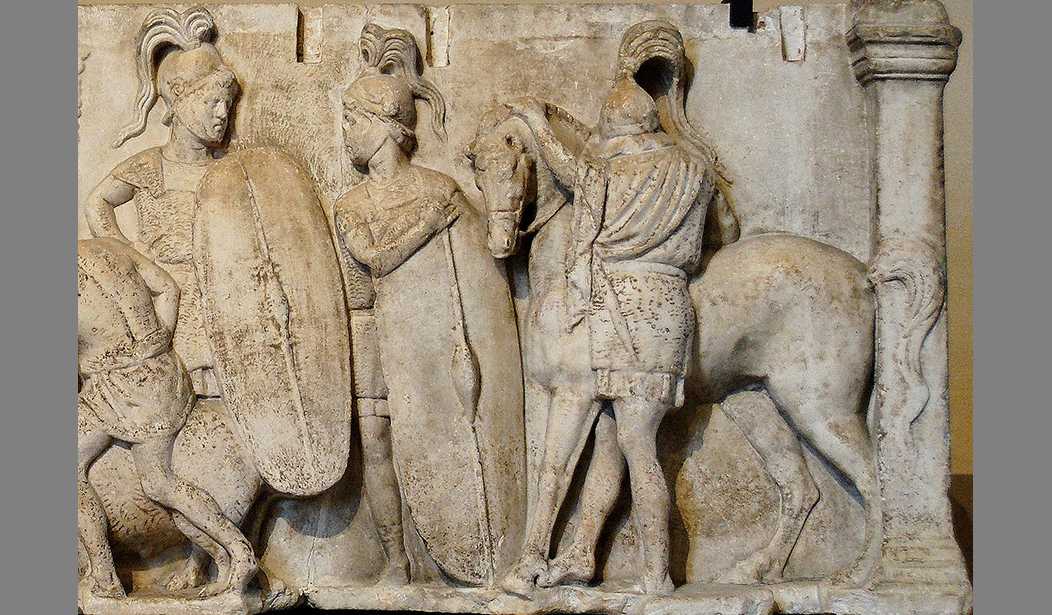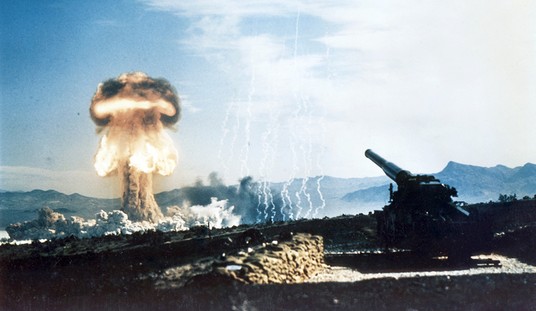We are, all of us, creatures of our time. That's why it's kind of ridiculous when people get all agitated about a statement someone made a hundred years ago that is, by today's standards, racist, sexist, or otherwise insensitive, but at that time was just the accepted term and the accepted way of looking at things. That doesn't make those people wrong; we can't judge them by today's standards but by the standards of their time.
The same applies to art, be it literature, poetry, sculpture — or graffiti. Which brings us to Rome, 2,000 years ago.
On Sunday, a Fox News piece examined graffiti produced by Roman kids during that time frame. The predictable observation was that much of the Roman kids' scribbles depicted violence. Well, it was a violent time.
Archaeologists in Italy recently uncovered "violent" cartoons, roughly 2,000 years old, drawn by children in ancient Rome.
The Archaeological Park of Pompeii announced the discovery on May 28. The doodles were found on a wall along Via dell'Abbondanza, which was the main street of Pompeii.
Pompeii is an ancient Roman city that was buried by volcanic ash during the eruption of Mount Vesuvius in 79 AD and largely remained hidden for centuries before it was officially rediscovered in the late 16th century.
The charcoal drawings depict gladiators and hunters, and historians say that children were regularly exposed to violence in Roman amphitheaters. In a statement translated from Italian to English, archaeologists connected the violence that children witnessed in antiquity to gruesome images that children see today in popular media.
"Exposure to extreme forms of violence, even of young children (estimated between 5 and 7 years old), does not seem to be a problem only nowadays, between video games and social media," the organization said.
There are several problems with the conclusions drawn here.
First, in Roman society, drawings on walls — graffiti — were sort of the X/Twitter of the day. Walking through a Roman city and looking at what was depicted in these informal sketches, by kids and adults both, could give you a fair idea of what people were thinking of current events, what was on their minds in general — not just in public matters, either — it gave you a pretty decent look into the Roman zeitgeist, the underlying currents of the culture.
Second, kids, in particular, depicted what they saw around them, just as they do now, and at this time, when the Roman Republic was in its last years (Pompeii was destroyed in 79AD, so the drawings were done before then) and it was a pretty violent time. Also, gladiators were pop culture heroes in Roman society. A Roman kid sketching a gladiator is no different than a kid today drawing his favorite sportsball figure — except, of course, that sportsball players today rarely fight to the death.
Third, there is an extreme misconception exhibited here about hunting for food. Hunting is not an act of aggression; it is not violent in the sense that there is no intent to cause suffering. No predatory animal living today exhibits aggressive behaviors when hunting; watch a pack of wolves trying to attack an elk, deer, or bison, and you won't see the hallmarks of aggression: lowered ears, raised hackles, bared teeth. The wolves are alert but their ears are forward, their tails up — it's all in a day's work to them.
The images drawn by these long-gone Roman kids are not proactive. They are reactive — they drew what they saw around them, what was an accepted part of life in their culture, which was very different then than now.
See Related: Outrage at California School: Principal Humiliates Student Over Patriotic Speech
Taking a Look at What People Won't Watch - What Is Behind Hollywood's Dismal Summer?
These kids lived in a time when, if one was going to eat chicken for supper, one had to kill and pluck the chicken. If someone tried to rob your home, Dad may well run them through with a sword before hailing the vigiles, who would likely just haul the ex-perpetrator away for disposal. Kids may well have seen half of their siblings die before their third birthday, and many lost their mothers in the process at a time when the rate of deaths in childbirth was shocking by our standards. If someone was found guilty of murder, their death sentence would very likely have been carried out by chucking them in the ring with the aforementioned gladiators, combining justice with entertainment in a particularly Roman fashion.
We can't judge people from 2,000 years ago by today's standards. We shouldn't try. These Roman kids were products of their times, and their art reflects that and has no impact on kids' video game or movie choices today. Any such attempt at this comparison is poppycock.















